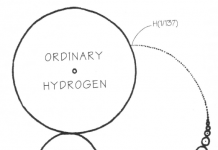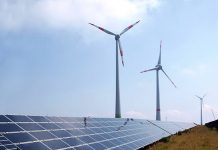The Pendulum Swings to Cash
Over the long term, market cycles are characterized by swings of sentiment, and changes in investor preferences. The recent cycle was characterized by an emphasis on growth and capital gains. In the current financial crisis, investors are again learning the value of cash, and companies which produce steady cash flow and dividends. Since the market tends to overshoot, I expect there will be a time a few years hence when, once again, the first question any investor asks about a stock is "What’s the yield?"
If I’m right, companies with strong cash flows that pay high dividends will likely outperform the market as a whole over the next few years. This is why I’ve been looking carefully at company’s cash flow statements and balance sheet, and we’ve been bringing you our picks of dividend paying alternative energy and energy efficiency stocks.
Beyond Dividends
Taking this reasoning a step farther, it makes sense to look at the slightly more exotic income trusts. Income trusts are companies that own mature, cash producing assets, from which substantially all the income is returned to the trust owners. In many cases, this structure provides the company with favorable tax treatment. For instance, US REITs are a type of income trust which holds real estate assets on which the income is not taxed at the company level, so long as 90% of that income is returned to investors.
Various types of income trusts may have different tax treatments for different classes of investors, and for different types of income trust. Both current tax treatment and changes in tax treatment can greatly influence returns. Nearly two years ago, I brought three renewable energy income trusts to reader’s attention because changes in Canadian tax law meant that the funds were changing hands, and I thought there might be future buying opportunities, although at the time I noted "It’s impossible to say what good price entry levels are for any of these funds."
Since then, the tax changes and the market meltdown mean that I now think we are seeing at least one such opportunity. I more than doubled my position in The Algonquin Power Income Fund (AGQNF.PK), at US$1.62 a share in December.
The Algonquin Power Income Fund
The Algonquin Power Income Fund owns a mix of hydroelectric, wind, cogeneration, waste-to-energy, and water and wastewater facilities in the US and Canada. The power and services from these facilities are sold under mostly long term contracts, generating mostly stable cash flows, although some contracts are indexed to natural gas prices, and some come up for renewal each year.
In October, the company cut distributions to unit holders by almost three quarters, and the stock price collapsed. Nevertheless, the price drop means that the yield, even with the lower level of distribution, is still nearly 11% (based on C$2.22 /US$1.83 stock price.) However, the large cut in distribution means that further cuts are much less likely to be necessary, and the company will have much less need to raise new capital at current low prices.
Given the good yield, the main concern for investors should be the likelihood of any future cuts in distributions. According to the press release, the fund’s trustees believe that the lower distributions will allow them to both internally fund capital investment, and pursue growth opportunities.
Unless cash flow deteriorates from the level in the third quarter financial results, the new level of distributions should mean that the company will just be able to fund the current level of investment with cash from operations, without having to raise new debt or equity. Since this agrees with the fund’s stated intent in reducing the distribution, I would be surprised if there is any further reduction in the distribution over the next couple years, although there are likely to be further changes when the Canadian tax law changes finally take effect in 2011. If cash flow falls below expectations, the Fund retains the option of drawing on a revolving credit facility, as well as temporarily curtailing new investments until cash flow recovers.
Conclusion
If I am correct in my expectation of stable distributions, and a growing preference among investors for income producing securities, the The Algonquin Power Income Fund should be able to appreciate as the business grows with new investment, all the while returning a healthy return from distributions.
The biggest risk I see is that the financial climate may prevent the fund from rolling over some of its debt (either at the project or company level) at a favorable rate. However, currently the main problems companies are having with financing are not because of rates on offer, but rather the much higher credit standards lenders expect from borrowers. Because the fund has debt at both the project level and the company level, there could easily be some project level debt which would be difficult to refinance in the current climate. That said, borrowers like Algonquin, which have verifiable, steady cash flows are just the type of borrowers most lenders are currently looking for. If Algonquin proves unable to roll over debt at a large scale, it will only be in a climate even worse than today’s, with no one being able to borrow at all.
Spectacular gains seem unlikely, unless market conditions improve dramatically. Nevertheless, in this climate, I’m happier with a steady distribution over 10% from the sale of clean energy than a chance of a spectacular gain but no expectation of cash anytime soon.
Note: This article was written in late December, and not published until now because I wanted to bring you 2 top ten lists and a 2008 year in review article around New Year’s. I included Algonquin in my 10 Stocks for 2009, when the stock was trading at $1.82. As I write, the stock has risen to $2.37, meaning the yield is down to about 8.6%, and the potential upside gain is reduced. On the other hand, Obama has now said that he wants to double renewable energy production as part of his stimulus plan, although he was not specific over what time period he expected that doubling to occur. Nevertheless, the additional confirmation of Obama’s long-standing commitment to renewable energy will be good for Algonquin’s projects in the United States, and may explain the recent rally. At this price, I’m not in a hurry to buy more, although I might still c
onsider it if I did not own any of the stock.
Tom Konrad, Ph.D.
DISCLOSURE: Tom Konrad owns AGQNF.
DISCLAIMER: The information and trades provided here and in the comments are for informational purposes only and are not a solicitation to buy or sell any of these securities. Investing involves substantial risk and you should evaluate your own risk levels before you make any investment. Past results are not an indication of future performance. Please take the time to read the full disclaimer here.





Great article. It is my understanding that APF.UN did not buy the Clean Power Income Fund. The Fund was purchased by MPE.UN.
Thanks for the heads-up, Brad.
6 Clean Power Income Trusts: A Good Way to Access High Yields
Charles Morand ( AltEnergyStocks ) submits: Last week, Tom Konrad brought you a piece on the Algonquin